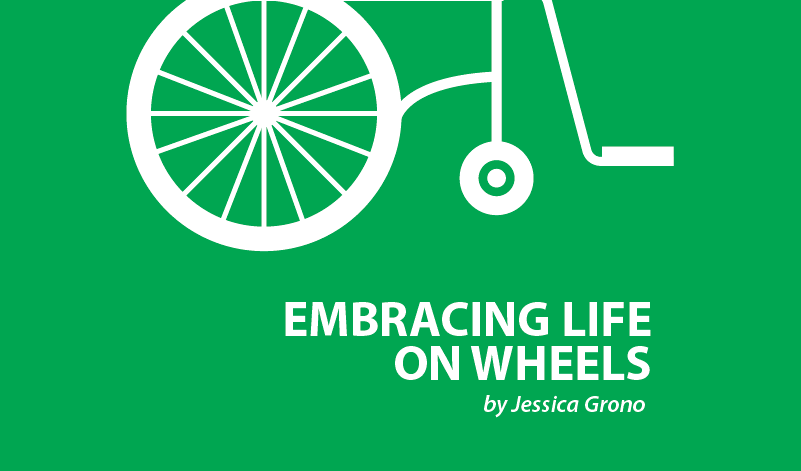Aging with Cerebral Palsy, and Advice to My Younger Self


Aging affects everyone differently, but with cerebral palsy aging has a whole different outcome. As a woman with spastic athetoid quadriplegia cerebral palsy, I’m still learning what aging does to my body. Studies to better understand aging, the body and cerebral palsy are increasing. With more information available, an individual with cerebral palsy can better prepare for the future.
At a younger age I could do anything I wanted without pain. The only effort I had was to try to control my muscles. Obviously, I had some limitations, especially with walking and fine motor skills, but I could move around easily. Nothing hurt and I had no problem rolling over, sitting up, crawling, and just moving in general. Now these activities are difficult, and arthritis pain is involved.
I sit in the “W” position. Basically that is what happens when you sit on your bottom and your legs bend behind you. When you look at someone head on, your legs appear to be in a “W” shape. Teachers, therapists, and even strangers would tell me I couldn’t sit like that for long. Well, here I am more than 40 years old, and as I type this article, I’m sitting in the “W” position. However, I need to be careful for how long I sit in this position due to arthritis in my hips.
I like to do my best to stay in shape physically. I try to maintain a healthy weight so I have an easier time moving around, and so others can pick me up without a problem. I enjoyed going to my local YMCA to use the hand bike. I also loved competing against myself on miles and time. I built up my arm strength and that would help me in all kinds of ways, such as pulling up on a hand bar in the bathroom. Unfortunately, I noticed my forearm would be sore afterward.
The pain started minimal, and I didn’t let the pain stop me. I thought it would fix itself eventually. I continued to do the hand bike about three times a week. But the pain didn’t subside; it worsened. I wasn’t able to pull up on my bar in the bathroom as easy as before. Sometimes even helping people pick me up, or using my arm, hurt very badly. Upon asking the doctor, it was determined I have tendonitis in my arm. The only way to really heal tendinitis is to rest the area and take ibuprofen.
Having cerebral palsy and staying still is very challenging. I try to avoid activities that will activate my arm pain. Unfortunately, that means I cannot currently use the arm bike, or lift weights. I also have to ask for assistance in areas where I used to be independent. I don’t enjoy this new phase of life regarding decreasing my independence.
For now, I do have some advice that I would have offered to my younger self with cerebral palsy:
Don’t stop living your life because of what might happen in the future. Don’t sit in one place for too long. Always keep moving, and try to get out of your wheelchair as often as possible. Build up your leg and arm strength daily in multiple ways instead of one method. Do everything you physically can while it’s easy to do so. Never take for granted your physical independence, because one day it might not be there. Take care of your body, teeth and muscles. Be active as long as you can.
***
Note: Cerebral Palsy News Today is strictly a news and information website about the disease. It does not provide medical advice, diagnosis, or treatment. This content is not intended to be a substitute for professional medical advice, diagnosis, or treatment. Always seek the advice of your physician or other qualified health provider with any questions you may have regarding a medical condition. Never disregard professional medical advice or delay in seeking it because of something you have read on this website. The opinions expressed in this column are not those of Cerebral Palsy News Today, or its parent company, BioNews Services, and are intended to spark discussion about issues pertaining to cerebral palsy.


